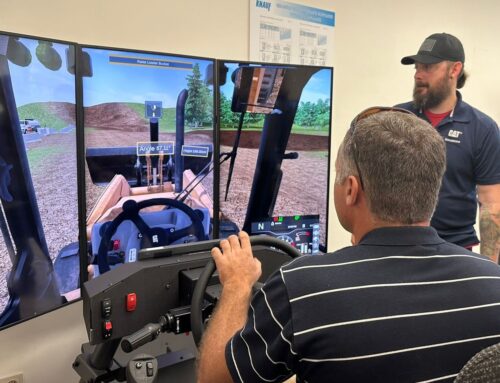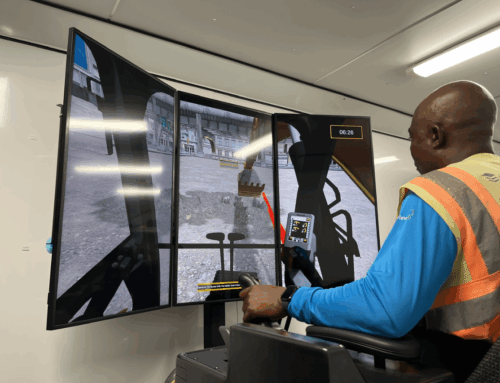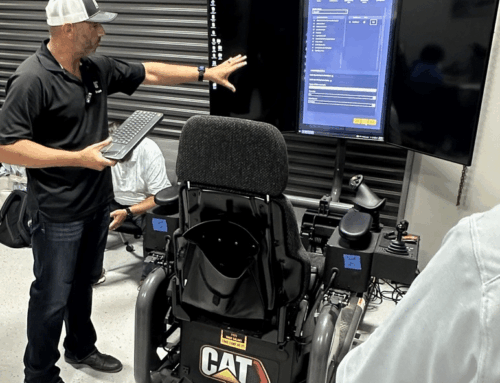More businesses need heavy equipment operators as current operators continue to retire and new businesses are formed. Upskilling is a must to stay competitive and to keep employees engaged. Upskill your operators with technology that expedites the process and reap the benefits. Upskilling any employee leads to a significant ROI for the employer. A study by the World Economic Forum found that closing the skills gap by upskilling employees could add $6.5 trillion to the global GDP and create 5.3 million net new jobs by 2030.
Upskill operators to:
- Adapt to new technologies. Heavy equipment is laden with technology. The smart monitors found in machine cabs may hold data such as payload, grade, productivity, equipment management, cameras and more. Operators can learn new technologies as updates are released, without interruption to day-to-day operations and they don’t have to sit in the cab to do so.
- Hone skills. Good operators can become better with training. What does that mean for your business? Increased production, cross-training operators or multiple machines, potential savings on maintenance costs, and more valuable employees. Operators who understand loading positions, truck spotting, bucket fill factors, attack angles and other techniques greatly increase production which means more money for your bottom line.
- Increase retention rates. Seven in 10 people say learning improves their connection with their company, according to a LinkedIn report. Less turnover saves money spent on hiring, onboarding and new hire training. Further, Training Magazine cites 61percent of employees consider upskilling opportunities as an important reason to stay at their jobs. Reducing turnover is a goal of every organization.
- Financial returns. Better-trained operators add to the bottom line through increased productivity, increased safety awareness, reduced fuel use and more. The relationship with healthy financials doesn’t end there.
- Boost in employee satisfaction. A workplace study by Axonify found that 92 percent of employees agree that well-planned employee training programs positively impact their engagement. These programs demonstrate that employees are valued, and you are willing to invest in employees’ futures, ultimately leading to increased loyalty and positive attitudes.
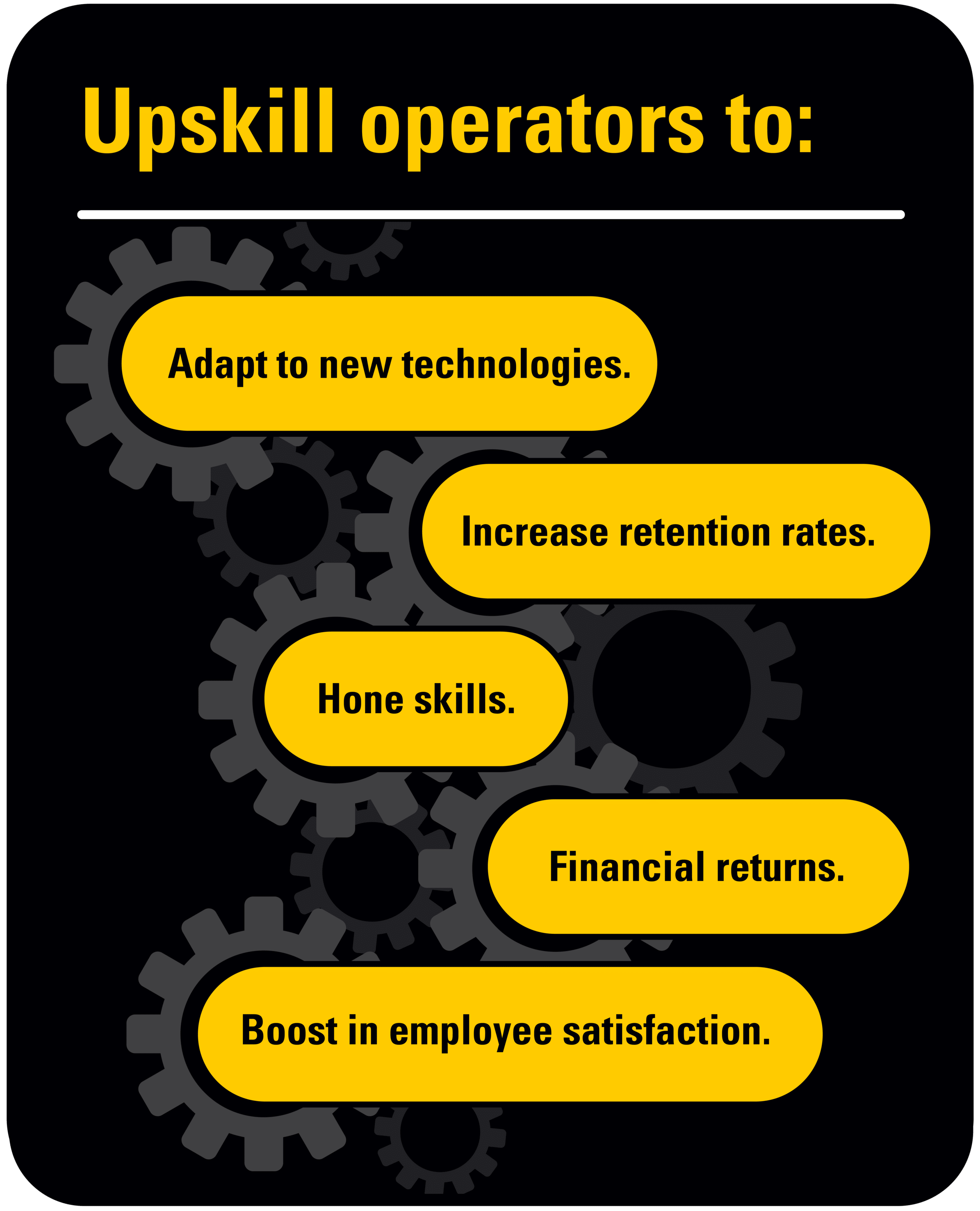
Training Tools
Upskilling can come in many forms, depending on the operator’s learning style. Offer choices and upskill multiple operators at one time.
- Hands-on training without taking a machine out of production is possible through simulators. Choose a simulator with authentic controls to ensure the learner can move seamlessly from the simulated machine to the real machine. A simulator with reporting features will ensure that learners’ progress can be tracked.
- Learners can benefit from simulations using a VR headset and hand controls. When fully immersed in a virtual environment, learners can train on machines. Or tools and equipment can be simulated in a tablet format. In either case, learners can make decisions without harming themselves, others or equipment.
- Whether a traditional LMS or other digital format, learners can study in a classroom format or self-paced from a remote location. Many times, credentials or certifications are offered for course completion.
- How-to videos can help learners better understand the correct way to perform applications. Look for videos from machine manufacturers or licensees for the most accurate depictions.
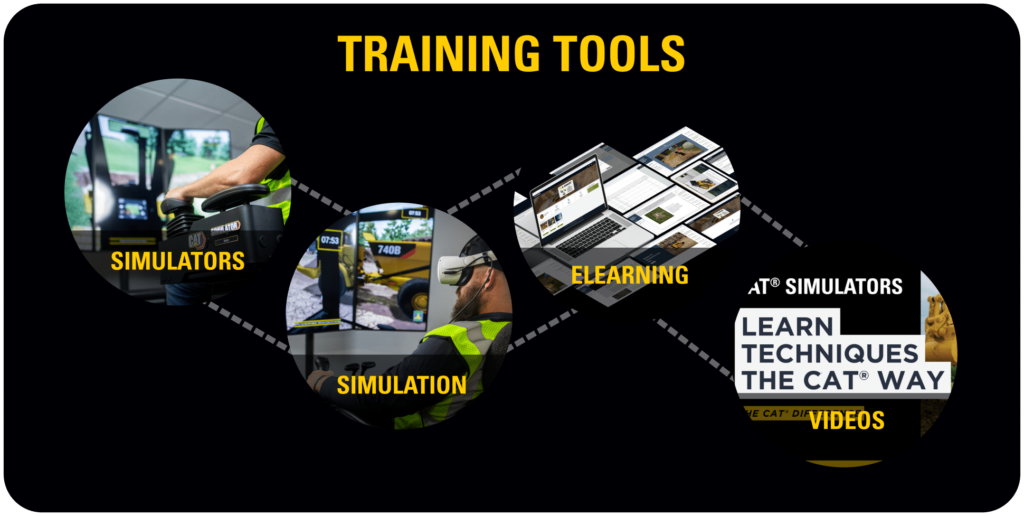
Calculating the ROI
For operators, metrics can be quantified to determine the impact of improvements. Those can be correlated to the business’s bottom line.
Increased productivity. Measure the machine output before and after training. Simulators are excellent tools for tracking improvements. Machine data can also be used when saved from the actual machine applications. Calculate the dollar value of increased output.
Reduced downtime. Estimate cost savings from increased maintenance intervals due to better operator care, including accidents and breakdowns.
Improved fuel efficiency. Compare fuel consumption pre- and post-training. Multiply the difference by the cost of fuel over a defined time.
Reduced safety incidents. Compute savings from reduced costs related to accidents. This should include machine maintenance, medical expenses, lost workdays, machines being out of production and legal costs (if applicable).
Retention improvements. Assess cost savings from reduced turnover, including hiring and onboarding expenses for new operators. Also, consider the cost of hiring new employees versus upskilling current employees. Savings of 70 percent to 92 percent can be realized when upskilling instead of hiring new people, according to HRDirector.com.
For help in obtaining heavy equipment simulators, curriculum and other upskilling tools contact our team at Simformotion, a leader in simulation training.


